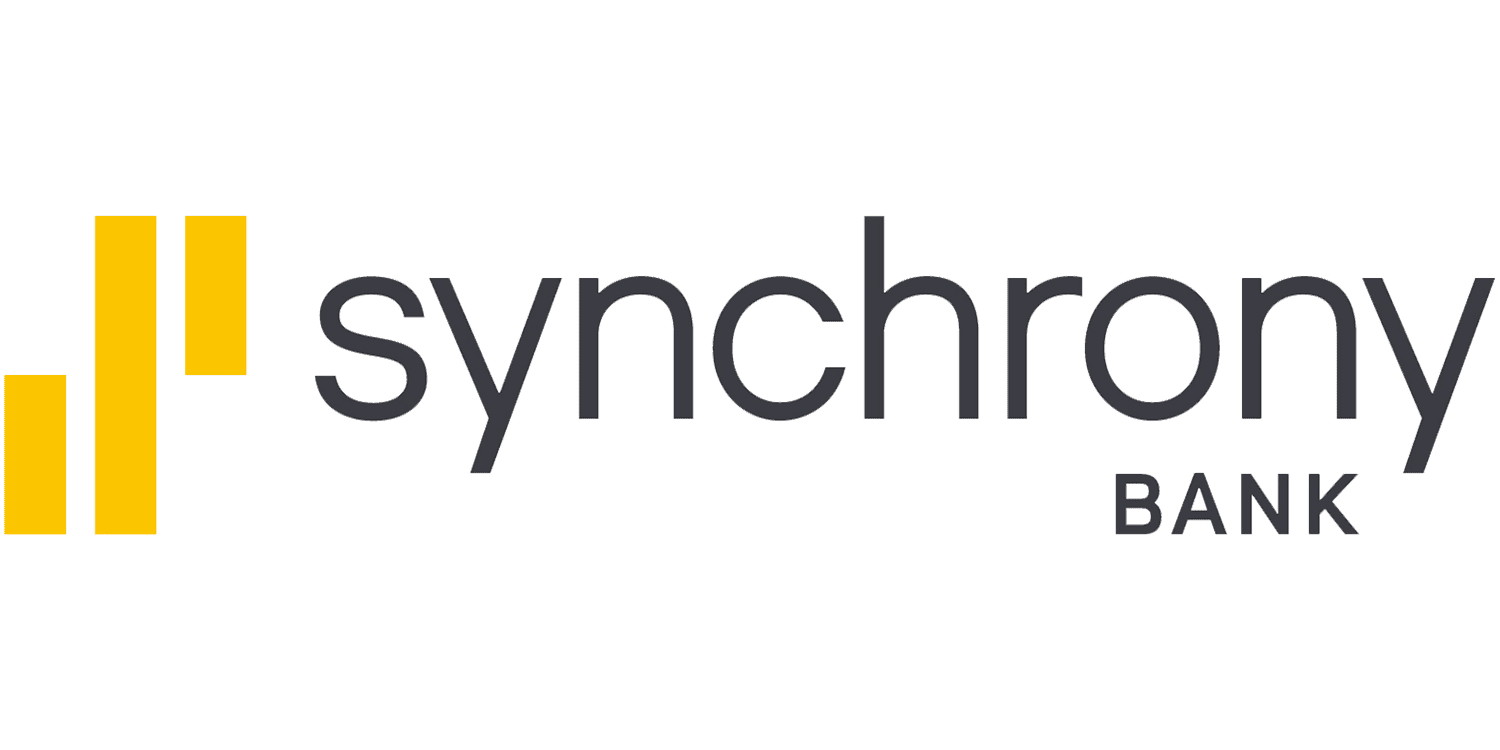Decision-making models provide structured approaches for making informed choices, whether it’s through consensus decisions, brainstorming, or leveraging expertise. These models help ensure that good decisions are made by incorporating different perspectives and utilizing the collective knowledge and skills of the group. These organizational dynamics models help individuals and organizations navigate complex decision-making processes by offering unique frameworks for approaching decisions. They are instrumental in understanding and enhancing organizational creativity, behavior, and brainstorming. Based on theories and principles from various disciplines, consensus decisions aim to improve decision outcomes and reduce biases by incorporating various ideas. Decision-making models help avoid groupthink and promote good decisions.
Understanding decision-making models is crucial when making important decisions, especially in brain discussions. It is important to avoid the pitfalls of groupthink and involve management executives in the decision-making process. Whether it’s an individual or group decision, having a clear approach led by a team leader can help avoid the potential pitfalls of groupthink and ensure consensus decisions are reached within the groups. One popular model is the rationality model, which emphasizes logical analysis and systematic evaluation of options for effective decision-making. Another approach to decision-making is intuitive decision-making, which involves intuition and gut feelings. Creative decision-making is another method that involves thinking outside the box and considering innovative solutions. Individuals can make more informed and well-rounded decisions by incorporating these decision criteria. Another model for decision-making is the intuitive model, which combines creative decision-making with rational decision-making. It relies on gut feelings, instincts, and decision criteria to create a decision tree.
The decision tree is a common decision-making model that visually represents different possible outcomes based on specific group choices. It provides a solution for reaching a consensus and generating ideas. This helps decision-makers visualize potential consequences using an intuitive model before making a final decision. It sparks ideas and encourages a creative model for decision-making, fostering creativity throughout the process.
Individuals and teams can enhance and develop new ideas by exploring different decision-making models. This will help them make well-informed choices that align with their goals and values while reaching a consensus within the team.
Importance of Decision-Making Models in Management

Effective management relies on sound decision-making processes.
In the fast-paced business world, managers are faced with numerous daily decisions. These decisions require creative ideas from the team to reach a consensus. These decisions require creative ideas from the team to reach a consensus. These decisions can range from small, routine choices to major strategic moves impacting the entire organization. They can be made by a team or group, with ideas and consensus playing a crucial role. They can be made by a team or group, with ideas and consensus playing a crucial role. Regardless of size or complexity, all decisions are crucial in shaping a company’s success. Ideas and creativity are essential in generating innovative solutions, while consensus within the team ensures effective decision-making. Ideas and creativity are essential in generating innovative solutions, while consensus within the team ensures effective decision-making. Effective management relies on sound decision-making processes that encouraging consensus, foster creative ideas, and lead to innovative solutions.
Decision-making models provide managers with a structured approach to making decisions that help foster consensus within the team, generate and evaluate ideas, and ultimately arrive at a solution. By following these models, decision-makers can ensure that they consider all relevant factors and make informed choices in their creative, rational, and individual decision-making. These models often involve problem identification, gathering information, evaluating alternatives, and selecting the best action for decision-makers. Whether through creative, rational, or intuitive decision-making, these processes guide selecting the most suitable action.
Decision-making models enhance managerial efficiency and effectiveness.
Managers oversee various aspects of an organization, including its operations, resources, personnel, and team. They play a crucial role in ensuring rational decision-making and implementing the creative decision model to find the best solution for the organization. To fulfill their responsibilities effectively, the team must be efficient and promptly make well-informed decisions. This will enable them to find the best solution and create a successful making model. Decision-making models are a solution that helps streamline the decision-making process for managers and their teams by providing a framework to guide them through each step.
By using decision-making models, managers can find a solution and avoid wasting time on unnecessary deliberations or getting stuck in analysis paralysis. These models help the team make efficient decisions. These rational decision-making models offer a systematic way for teams to evaluate options and objectively weigh their pros and cons, ultimately leading to a solution. As a result, team managers can make faster decisions without compromising the quality of their solution-making model.
Using decision-making models can lead to better resource allocation and risk management.
Resource allocation is a critical aspect of management as it involves rational decision-making in allocating limited resources such as time, money, and manpower optimally across different projects or initiatives. The creative decision model helps the team find the best solution. Decision-making models are a valuable solution for managers, enabling them to assess projects and investments for the highest returns while considering resource constraints. These models help the team make informed decisions.
Furthermore, decision-making models also aid in risk management. Every decision carries some risk, whether related to financial investments, organizational operational changes, or finding the right team and solution. By utilizing these models, managers can make rational decisions by identifying potential risks, evaluating their likelihood and impact, and developing mitigation strategies. This solution-oriented approach helps the team in making informed decisions. This proactive approach enables team managers to make decisions that minimize potential negative consequences for their team.
Managers who utilize these models are more likely to make informed, data-driven decisions.
In today’s data-driven world, making decisions based on intuition or guesswork is no longer sufficient for a team. Managers need access to accurate and relevant information to make rational choices. This involves following a creative decision model and collaborating with the team. Decision-making models facilitate gathering and analyzing data, which is crucial for the team.
These decision-making models encourage team managers to collect data from various sources, such as market research, financial reports, customer feedback, and industry trends. By considering a wide range of information, managers can gain valuable insights that inform their decision-making process. This is especially important when working with a team, as different perspectives and expertise can contribute to a more well-rounded understanding of the situation. This is especially important when working with a team, as different perspectives and expertise can contribute to a more well-rounded understanding of the situation. This data-driven approach increases the likelihood of making well-informed decisions that align with organizational goals and objectives. It is a valuable tool for the team to achieve success. It is a valuable tool for the team to achieve success.
Decision-making models promote consistency and transparency in managerial practices.
Consistency is crucial for effective management. When managers follow a consistent decision-making model across different scenarios, it ensures fairness and eliminates bias in their choices for the team. Moreover, consistent decision-making promotes trust among team members as they understand the rationale behind managerial decisions.
Transparency is crucial for effective team decision-making and creating a positive work environment. Implementing a decision model can further enhance the decision-making process within the team. Employees appreciate when team managers are open about the decision-making process and provide clear explanations for their choices. Decision-making models help facilitate transparency by providing a framework that can be communicated to all stakeholders in the team involved in the decision-making process.
Understanding Different Decision-Making Models

Rational Model: Making Decisions Based on Logic and Reasoning
The rational model is one of the most well-known decision-making models teams use. It assumes that individuals make decisions as part of a team by carefully evaluating all available information and alternatives and choosing the option that maximizes their expected utility or outcome. This model follows a systematic approach with clear steps to guide decision-makers and their team.
- Identify the team problem: The first step in the rational model is to clearly define the team problem or decision that needs to be made. Making decisions as a team involves understanding the underlying issues and determining what needs to be resolved.
- Gather team information: Once the problem is identified, decision-makers must gather relevant team information about the situation. When deciding on a team, it is important to consider various factors such as conducting research, collecting data, or seeking expert input.
- Generate team alternatives: In this step, team decision-makers brainstorm potential team solutions or alternatives to address the team problem. The team considers various options and evaluates their feasibility and effectiveness.
- Evaluate team alternatives: After generating a list of possible alternatives, decision-makers assess each option based on predetermined criteria or factors such as cost, time constraints, risks, and benefits. This evaluation helps narrow down the choices.
- Please make a choice: Once all alternatives have been evaluated, decision-makers select the option they believe best aligns with their goals and objectives. They choose the alternative that offers maximum benefits while minimizing risks and costs.
- Please implement the decision: After making a choice, it is very important to effectively put the selected alternative into action. This may involve making a decision, creating an implementation plan for decision making, assigning responsibilities for decision making, allocating resources for decision making, and monitoring progress for decision making.
- Evaluate decision-making outcomes: The final step in the rational model is to assess whether the chosen alternative achieved its desired decision-making outcomes. Decision-makers analyze results against initial expectations and make adjustments if needed.
Bounded Rationality Model: Accepting Limited Information
While the rational model assumes perfect information and complete rationality, the bounded rationality model acknowledges that decision-makers often face constraints such as time, limited information, and cognitive limitations. This model recognizes that individuals make decisions by satisficing rather than optimizing.
- Satisficing: In the bounded rationality model, decision-makers aim to find a satisfactory solution rather than the optimal one. When it comes to decision-making, people only extensively search for sometimes possible altern. Instead, they settle for an option that meets their minimum requirements or criteria.
- Heuristics: Decision-makers rely on mental shortcuts or heuristics to simplify complex choices. These heuristics help them make quicker decisions based on limited information and past experiences. However, they can also introduce biases and errors into the decision-making process.
- Limited information: Decision-makers in this model accept that they may need access to all relevant information due to time constraints or incomplete data. They engage in decision-making by working with the available information and making judgments based on their knowledge.
- Bounded rationality in practice: The bounded rationality model is frequently observed in real-world scenarios where quick decisions are necessary, such as emergencies or time-sensitive business decisions. It allows decision-makers to navigate complexity while acknowledging their cognitive limitations.
Intuitive Model: Trusting Gut Feelings and Personal Judgment
The intuitive decision-making model emphasizes relying on intuition, gut feelings, and personal judgment.
Effective Usage of Decision-Making Models

Choosing the Appropriate Decision-Making Model
Choosing the appropriate decision-making model is crucial. The nature of the problem or situation plays a significant role in decision-making, determining which model will yield the best results. Different decision-making models offer unique approaches and frameworks that can be applied depending on the circumstances.
For instance, a rational decision-making model emphasizes logical analysis and systematic evaluation of potential outcomes. This approach to decision-making involves gathering relevant information, assessing alternatives, and considering the consequences before arriving at a final choice. Rational decision-making is often employed when there is ample time for careful deliberation and when objective data is readily available.
On the other hand, creative decision models encourage thinking outside of the box and exploring innovative solutions. These decision-making models are particularly useful when faced with complex problems that require unconventional approaches. Creative decision models can unlock new possibilities and lead to breakthrough solutions by encouraging creativity and allowing spectives.
Applying a Systematic Approach
To ensure thorough analysis before making a final choice, applying a systematic approach is essential. This involves following a structured process that guides decision-makers through various evaluation stages.
One common systematic decision-making approach is gathering all relevant information related to the problem or situation. This could include data, facts, expert opinions, or even anecdotal evidence for decision-making. By collecting comprehensive information, decision-makers can gain valuable insights into potential outcomes and make informed choices.
Once all necessary information has been gathered, it is important to evaluate different options using predefined criteria or metrics for decision-making. This step in decision-making allows for an objective comparison between alternatives based on their merits and potential impact. Establishing clear evaluation criteria upfront can minimize biases, leading to more reliable and effective decisions.
Finally, after evaluating different options, decision-makers should consider the potential consequences associated with each alternative. This includes assessing both short-term and long-term implications and any risks involved in decision-making. By taking a holistic view of the potential outcomes, decision-makers can make choices that align with their goals and objectives.
Regularly Reviewing and Updating Decision-Making Models
Decision-making models should not be set in stone but rather regularly reviewed and updated to ensure their continued relevance. As the business landscape evolves, decision-making becomes crucial in navigating new challenges and opportunities. It requires adaptations to existing models or the development of new ones.
Regular reviews enable organizations to identify gaps or shortcomings in their decision-making processes. By seeking feedback from stakeholders and analyzing past decisions, organizations can identify areas for improvement and refine their models accordingly. This iterative approach helps maintain the effectiveness of decision-making models over time.
Furthermore, staying up-to-date with industry trends and advancements allows organizations to incorporate new techniques into their decision-making practices. For example, emerging technologies such as artificial intelligence or machine learning can enhance the accuracy of predictions and aid in decision-making. By embracing innovation, organizations can stay ahead of the curve and make more effective decisions.
Collaborating with Stakeholders
Collaboration with stakeholders is a key factor in enhancing the effectiveness of using decision-making models. Involving individuals with a vested interest in the outcome of a decision brings diverse perspectives to the table. This diversity fosters creativity, encourages critical thinking, and reduces blind spots that may exist when a single individual or a small group makes decisions.
Decision-Making Models for Leadership Success

Inspiring Confidence through Effective Decision-Making Models
Leaders who aspire to success understand the critical role that effective decision-making models play in inspiring team confidence. Decision makers’ ability to navigate complex and ambiguous situations is directly linked to their leadership skills. By employing well-established decision-making models, leaders can instill trust and assurance within their team members.
One approach to decision-making and achieving this is by utilizing diverse perspectives within a team. Successful leaders recognize the value of incorporating different viewpoints when making decisions. By encouraging open dialogue and actively seeking input from team members with varied backgrounds and expertise, leaders tap into a wealth of knowledge that leads to more robust decisions. This inclusive approach promotes creativity and fosters a sense of ownership among team members, resulting in increased commitment toward the chosen course of action and better decision-making.
Flexibility in Adaptive Leadership
Adaptive leadership requires flexibility in selecting appropriate decision-making approaches. Leaders must be able to adapt their decision-making strategies based on the specific circumstances they face. Successful leaders understand the importance of matching the right decision-making model with the given context. Different situations call for different decision-making models.
For instance, leaders may opt for a more decision-making model in fast-paced environments where quick decisions are necessary. In contrast, a participatory or consensus-based model might be more effective when dealing with complex problems that require for decision-making. Leaders with a deep understanding of various decision-making models can confidently assess each situation’s dynamics and select an approach that best aligns with organizational goals.
Long-Term Consequences and Sustainable Decision-Making
Leaders who consider long-term consequences foster sustainable decision-making practices within their organizations. While short-term gains may be tempting, successful leaders recognize the importance of evaluating potential outcomes over an extended period when making decisions.
By considering environmental impact, ethical considerations, and stakeholder interests, leaders ensure that their decisions contribute positively to immediate and future goals. This long-term perspective is crucial for decision-making, building a reputation of integrity and responsible leadership, and enhancing organizational success.
Navigating Complex and Ambiguous Situations
Decision-making models are invaluable tools for leaders when navigating complex and ambiguous situations. In today’s rapidly changing business landscape, leaders often face multifaceted challenges that require effective decision-making. Leaders can apprations with confidence and clarity by employing established decision-making models.
For example, the Vroom-Yetton-Jago Decision Model provides a systematic framework for determining the appropriate level of employee involvement in decision-making processes. This model helps leaders assess the situation’s complexity, time constraints, and available information to decide whether to involve team members or make unilateral choices.
Another widely used model for decision-making is the Cynefin framework, which helps leaders understand the nature of problems they encounter. By categorizing problems into simple, complicated, complex, or chaotic domains, leaders gain insights into suitable approaches for decision-making. This model emphasizes recognizing when traditional linear thinking may be insufficient for decision-making and promotes more adaptive strategies for tackling complex challenges.
Role of Emotions and Cognitive Biases in Decision-Making

Emotions and Their Influence on Decision-Making
Emotions play a significant role in our decision-making process, often influencing our perceptions and preferences. When making decisions, our emotions can greatly influence our choices based on how they make us feel. For example, when it comes to decision-making, if we associate positive emotions with a particular outcome, we may be more inclined to choose that option, even if it may not be the most rational choice.
Consider a scenario where you are deciding between two job offers. One offer provides a higher salary but requires longer working hours, while the other offers slightly lower pay but promises a better work-life balance. Suppose you have a strong desire for security and material possessions. In that case, for financial s your emotions might push you towards accepting the higher-paying job despite its potential impact on your personal life.
Cognitive Biases: The Pitfalls of Flawed Decisions
In addition to emotions, cognitive biases play a crucial role in decision-making. These biases are inherent mental shortcuts or thinking patterns that can lead to flawed judgments and decisions. One common cognitive bias is confirmation bias, where individuals seek information confirming their beliefs or opinions while ignoring contradictory evidence.
Imagine you are considering investing in a particular stock because you believe it will perform well based on recent news articles praising its prospects. However, by solely focusing on these positive reports and dismissing any negative analysis or warnings from experts, you fall victim to confirmation bias. This biased approach prevents you from fully evaluating the risks associated with the investment and can lead to poor decision outcomes.
Another prevalent cognitive bias is anchoring bias. This occurs when individuals rely too heavily on initial information (the anchor) when making subsequent judgments or decisions. For instance, when negotiating the price of a car with a salesperson, they might start by offering an inflated price as an anchor point. You must recognize this tactic and anchor your counteroffer too close to the initial price to avoid paying more than the car is worth.
Mitigating Emotional Influence and Recognizing Cognitive Biases
To make more informed decisions, it is crucial to understand the role of emotions and cognitive biases. By recognizing how our emotions can cloud our judgment, we can take steps to mitigate their negative impact on decision outcomes. One way to achieve this is by practicing self-awareness. Reflecting on our emotional state before deciding allows us to consider whether our feelings guide us toward an irrational choice.
Critical thinking skills play a vital role in combating cognitive biases. By actively questioning and challenging our assumptions and beliefs, we can break free from the constraints of confirmation bias. Seeking out diverse perspectives and considering alternative viewpoints also helps broaden our understanding of complex situations, enabling more rational decision-making.
Furthermore, data-driven analysis provides an objective framework for decision-making that minimizes the influence of emotions and biases. We can make more reliable judgments using empirical evidence and factual information rather than personal opinions or gut instincts. Utilizing statistical data, conducting thorough research, and weighing all available options contribute to rational decision-making.
The Importance of Combating Biases for Rational Decision-Making
Recognizing and addressing emotional influences and cognitive biases are essential for rational decision-making.
Ethical Considerations in Decision-Making Models

Evaluation Frameworks for Moral Implications
Ethical decision-making models offer valuable frameworks for evaluating the moral implications of our choices. These models provide a structured approach to ensure that decisions are based on rationality and consider the ethical dimensions involved. By considering these frameworks, individuals and organizations can navigate complex situations focusing on upholding moral values.
One commonly used ethical decision-making model is based on autonomy, beneficence, non-maleficence, and justice principles. When faced with an ethical dilemma, individuals can apply these principles to evaluate the potential consequences and choose the course of action that aligns best with their organization’s values. For example, if a decision has the potential to harm others, the principle of non-maleficence guides us to avoid causing harm whenever possible.
Careful Evaluation of Ethical Dilemmas
Ethical dilemmas often arise when there are conflicting interests or values at stake. In such situations, evaluating each option using ethical decision-making models is crucial. Before deciding, these models help us consider various factors such as fairness, long-term consequences, and social impact.
The rationality approach is one such model that aids in ethical decision-making. It involves identifying and evaluating all available options against predetermined or decision criteria. These criteria could include legal requirements, organizational policies, societal norms, or personal beliefs. By systematically assessing each option against these criteria, we can make more informed decisions prioritizing ethics.
Transparency and Accountability in Applying Ethical Models
Applying ethical decision-making models requires transparency and accountability throughout the process. When faced with difficult choices with significant moral implications, involving relevant stakeholders and communicating openly about the decision-making process is essential.
Transparency ensures decisions are made based on shared information and understanding among all parties involved. This fosters trust and allows for a more inclusive decision-making process. Moreover, accountability holds individuals responsible for their decisions, ensuring they can justify their choices based on the ethical frameworks employed.
Balancing Competing Interests
Ethical decision-making often involves balancing competing interests. Organizations must consider their objectives and the needs and expectations of various stakeholders. Organizations can make more ethically sound and sustainable decisions in the long run by considering the perspectives of employees, customers, shareholders, and the wider community.
For instance, when faced with “life or death” decisions, such as allocating limited resources during a crisis, ethical decision-making models help us make fair choices. These models consider factors like medical need, chances of survival, and overall societal impact to ensure that decisions are made equitably.
Enhancing Decision-Making Skills
In today’s fast-paced and complex business environment, making effective decisions is crucial for success. Individuals can enhance their decision-making skills and achieve better outcomes by utilizing different decisions by understanding. The importance of decision-making models in management cannot be overstated, as they provide a structured approach to problem-solving and help mitigate risks.
To make the most of decision-making models, it is essential to understand their various types and when to apply them. Different situations call for different approaches, such as rational decision-making models or intuitive decision-making models. By recognizing the role of emotions and cognitive biases in decision-making, individuals can learn to navigate these factors effectively.
Leaders must consider ethical considerations in their models to further improve decision-making skills. Ethical dilemmas often arise in decision-making processes, and being mindful of ethical implications can ensure responsible choices that align with organizational values.
In conclusion, enhancing decision-making skills by utilizing diverse decision-making models is paramount for successful leadership. By understanding the importance of these models in management, learning about different types, incorporating emotional intelligence into the process, and considering ethical aspects, individuals can make informed decisions that drive positive outcomes.
FAQs
What are some common cognitive biases that affect decision-making?
Cognitive biases are inherent tendencies that influence our thinking patterns and can impact our ability to make objective decisions. Some common cognitive biases include confirmation bias (favoring information that confirms existing beliefs), availability bias (relying on readily available information), anchoring bias (over-relying on initial information), and recency bias (giving more weight to recent events).
How can I overcome cognitive biases when making decisions?
Overcoming cognitive biases requires self-awareness and deliberate effort. It helps to seek out diverse perspectives and challenge your assumptions actively. Engaging in critical thinking exercises and gathering comprehensive data before concluding can also help counteract cognitive biases.
Are decision-making models applicable to personal decision-making?
Yes, decision-making models can be valuable tools for personal decision-making as well. Whether it’s choosing a career path, making financial decisions, or resolving personal conflicts, utilizing a structured approach can lead to better outcomes. By applying the principles of decision-making models, individuals can make more informed and rational choices in their personal lives.
How can emotional intelligence impact decision-making?
Emotional intelligence refers to the ability to recognize and manage emotions effectively. It plays a significant role in decision-making by allowing individuals to understand their emotions and those of others involved. Emotional intelligence helps mitigate biases driven by strong emotions and enables more empathetic and balanced decisions.
What are some ethical considerations in decision-making models?
Ethical considerations involve evaluating the potential impact of decisions on various stakeholders and ensuring alignment with moral values. Some ethical considerations include fairness, transparency, honesty, respect for human rights, and sustainability. Integrating ethical principles into decision-making models promotes responsible leadership and long-term organizational success.










1 Comment